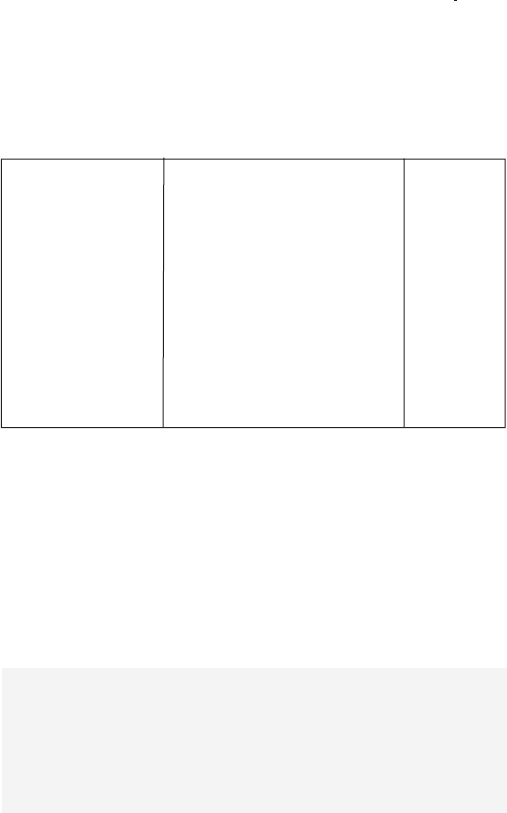
26
Red Zone – As all of the bars appear (red zone), your no-decompression stop
time has become zero and your dive has become a decompression stop dive
(for more information see section 3.3.6. “Decompression dives”).
3.3.5. Ascent Rate Indicator
The ascent rate is shown graphically along the right side of the display
as follows:
TABLE 3.2. ASCENT RATE INDICATOR
Ascent Rate The equivalent Example
Indicator ascent speed in Fig.
No segments Below 4 m/min [13 ft/min] 3.8
One segment 4 - 6 m/min [13 – 20 ft/min] 3.9
Two segments 6 - 8 m/min [20 – 26 ft/min] 3.10
Three segments 8 - 10 m/min [26 – 33 ft/min] 3.11
Four segments 10 - 12 m/min [33 – 39 ft/min] 3.12
Four segments, the Above 12 m/min [39 ft/min] or
SLOW segment, continuously above
blinking depth reading, 10 m/min [33 ft/min] 3.13
the STOP sign and
an audible alarm
When the maximum allowed ascent rate is exceeded, the fi fth SLOW
warning segment and the STOP sign appear and the depth reading starts
to blink, indicating that the maximum ascent rate has been exceeded
continuously or that the current ascent rate is signifi cantly above the
allowed rate.
Whenever the SLOW warning segment and the STOP sign appear
(Fig. 3.13.), you should immediately slow down your ascent. When you
reach the depth zone between 6 m to 3 m [20 ft to 10 ft] the STOP and
CEILING depth labels will advise you to make a Mandatory Safety Stop.
Wait until the warning disappears (Fig. 3.14.). You should not ascend
shallower than 3 m [10 ft] with the Mandatory Safety Stop warning on.
WARNING!
DO NOT EXCEED THE MAXIMUM ASCENT RATE! Rapid ascents
increase the risk of injury. You should always make the Mandatory and
Recommended Safety Stops after you have exceeded the maximum
recommended ascent rate. If this Mandatory Safety Stop is not com-
pleted the decompression model will penalize your next dive(s).


















